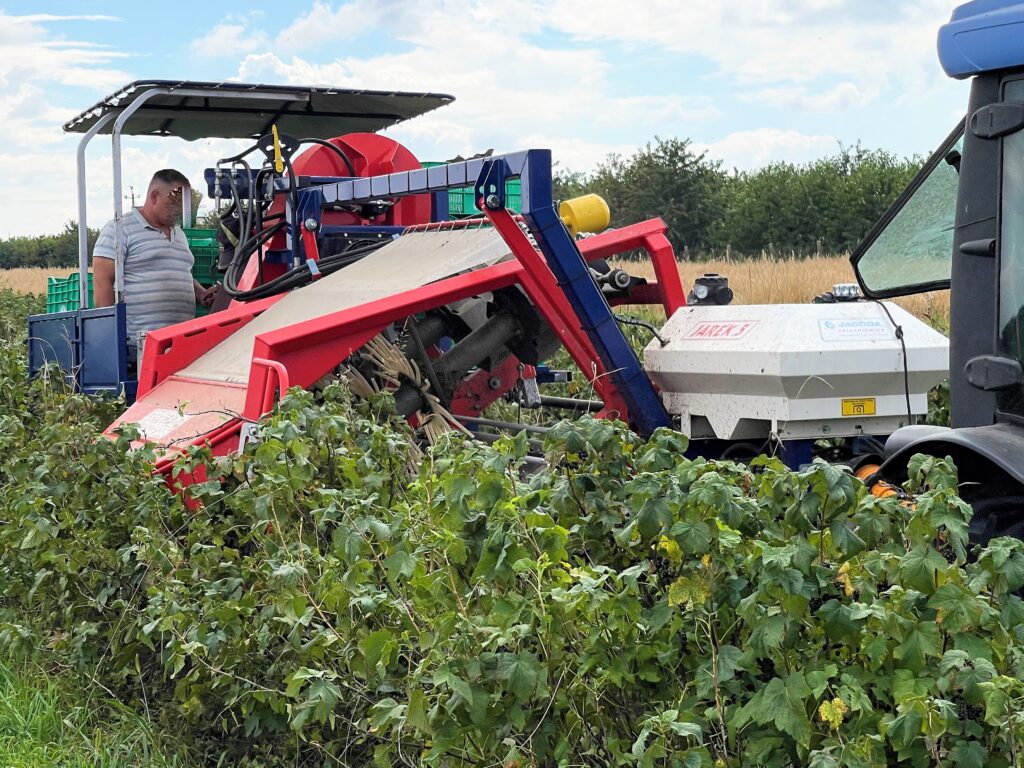- This topic is empty.
- AuthorPosts
- January 21, 2025 at 11:19 pm #543515

Currants, prized for their rich flavor and nutritional value, are increasingly gaining attention for their commercial cultivation.
With advancements in growing technology and mechanized harvesting methods, currant farming has become more efficient and sustainable.
These innovations address the challenges of traditional farming while optimizing yield and quality.
Understanding currant growing technology and mechanized harvesting can help farmers achieve better results and maximize profitability.
1. Advanced Growing Techniques For Currants
Modern currant farming begins with selecting the right variety for specific climates and soil conditions. Advances in agricultural technology have introduced disease-resistant and high-yielding currant varieties, ensuring better adaptability and productivity.
Precision farming techniques, such as soil testing and GPS mapping, allow farmers to understand nutrient requirements and implement targeted fertilization.
Drip irrigation systems have also revolutionized currant cultivation by providing consistent moisture without water wastage.
This technology ensures that the plants receive adequate hydration while minimizing the risk of fungal diseases caused by overwatering.
Additionally, greenhouse cultivation is becoming popular, enabling year-round production and protection from adverse weather conditions.
2. Importance Of Soil Management
Soil quality plays a critical role in currant cultivation, and technology has enhanced soil management practices.
Soil sensors and analytical tools provide real-time data on pH, moisture, and nutrient levels, allowing farmers to make informed decisions about amendments. Regularly adding organic matter, such as compost, helps improve soil fertility and structure.
Crop rotation and intercropping are traditional practices now supported by data-driven insights to prevent soil depletion and reduce pest infestations.
Technology ensures that currants are grown in optimal soil conditions, leading to healthier plants and higher yields.
3. Mechanized Harvesting Techniques
Harvesting currants manually can be labor-intensive and time-consuming. Mechanized harvesting has addressed these challenges by introducing efficient and cost-effective solutions.
Modern currant harvesters are equipped with advanced features like adjustable vibrating mechanisms and collection systems that minimize fruit damage while maximizing yield.
These machines can handle large areas within a short time, reducing reliance on manual labor and lowering production costs.
They also allow for timely harvesting, ensuring that the currants are picked at their peak ripeness for optimal flavor and quality. Mechanized harvesting technology has transformed currant farming, making it more scalable and profitable.
4. Post-Harvest Handling And Processing
Proper post-harvest handling is essential to maintain the quality of currants. Mechanized sorting and grading systems ensure that only the best fruits reach the market.
These systems use sensors to detect size, color, and defects, streamlining the grading process and enhancing market value.
Cold storage technology plays a vital role in preserving currants after harvest. Temperature-controlled environments prevent spoilage and maintain freshness, extending the shelf life of the produce.
Additionally, packaging advancements, such as vacuum-sealed containers, keep currants fresh during transportation and storage.
5. Sustainable Practices In Currant Cultivation
Sustainability is an integral part of modern currant farming. Technologies such as renewable energy-powered irrigation systems and biodegradable mulch films help reduce the environmental impact of cultivation.
Integrated pest management (IPM) strategies, supported by digital monitoring tools, minimize the use of chemical pesticides while effectively controlling pests.
The use of automated drones and robots for monitoring plant health and applying treatments has further improved efficiency and reduced waste.
These sustainable practices ensure that currant farming is not only profitable but also environmentally responsible, meeting the growing demand for eco-friendly agricultural products.
Currant growing technology and mechanized harvesting represent a significant leap forward in modern agriculture. These innovations simplify farming, enhance productivity, and reduce labor costs, making currant cultivation more accessible and profitable.
By embracing advanced techniques and sustainable practices, farmers can ensure a bright future for currant production while meeting the increasing global demand for high-quality fruit.
- AuthorPosts
- You must be logged in to reply to this topic.

